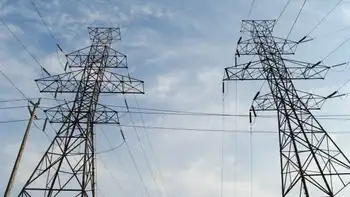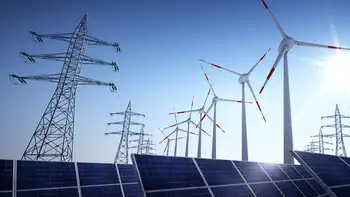BC Hydro upgrades system to help prepare for natural disasters
By BC Hydro
NFPA 70e Training - Arc Flash
Our customized live online or in‑person group training can be delivered to your staff at your location.

- Live Online
- 6 hours Instructor-led
- Group Training Available
Electricity is the backbone of B.C.Â’s economy and it powers society's way of life. If a major natural disaster, like an earthquake, hits areas of British Columbia, timely power restoration is critical to the recovery of essential services and infrastructure. Power will be needed for emergency centres, hospitals and other key facilities.
ThatÂ’s why BC Hydro is making major investments in key facilities like dams, substations and control stations and taking steps to improve its ability to react, respond and recover from a natural disaster. Investing in dams, substations and facilities
BC Hydro is preparing for a natural disaster by upgrading its existing facilities, investing in new infrastructure and maintaining a program of regular site inspections to protect public and worker safety.
For example, the utility is currently making upgrades to the Ruskin Dam and Powerhouse near Mission and will start work soon on the John Hart Generating Station in Campbell River. On the transmission side, BC Hydro is strengthening the transmission system by reinforcing key substations, towers and underground cables.
When the utility adds to its electrical system, it is incorporating seismic standards so that these facilities will withstand a natural disaster. For example, the Vancouver City Central Transmission project, currently under construction, includes underground transmission cables installed at a depth where the ground is not prone to liquefaction during an earthquake.
The new Mount Pleasant substation, being built as part of this project, will be one of the safest places in Vancouver to be in during an earthquake and can operate post-disaster. This project will also help speed the restoration of power to customers in Vancouver in the event of a disaster by adding redundancy and resiliency to the power transmission system that supplies the city.
BC Hydro has made and continues to make upgrades to several key facilities throughout the province:
- The Fraser Valley Operations Centre is a state-of-the-art system control centre that is BC HydroÂ’s central hub for managing the electricity system across the province. This centre is specifically built to operate in the event of a natural disaster. The utility has also built a back-up facility in the Okanagan to ensure BC Hydro can instantly transfer control should anything happen to the primary centre in the Lower Mainland.
- Coquitlam Dam: seismic upgrade was completed in 2008 which involved building a new earth and rock dam downstream from the original dam.
- John Hart Dam and Generating Station: replacing the facility in Campbell River because the water pipelines and generating station may not withstand a low to moderate earthquake.
- Ruskin Dam and Powerhouse: upgrading the facility to meet modern seismic standards. With this investment, the Ruskin Dam would survive a severe earthquake without significant damage – it is being designed to withstand the one-in-10,000 year earthquake.
- Regional emergency operations centres are being built to be functional after a disaster in key operational areas like Port Alberni, Campbell River, Nanaimo, Victoria, Burnaby, Maple Ridge, Prince George and Vernon.
Preparing to recover from a disaster
BC Hydro recently initiated its own audit of its practices to identify areas where further steps are needed to improve emergency preparedness. A few areas the utility is working on include:
- Strategy: BC Hydo has created a three-year strategic resiliency plan and is taking every step to accelerate its efforts. As part of the plan, each business group within BC Hydro will develop individual response and recovery plans. The utility has existing plans in place. However, BC Hydro needs to ensure existing and new plans are better integrated to ensure a coordinated response across the organization.
- Employees: BC Hydro is also working to ensure that employees better understand their role during an emergency: how and where they will perform critical activities if their normal workplaces are not operational. This includes training and more frequent hands-on exercises for practice.
- Partners: In May, BC Hydro joined the Western Energy Institute Regional Mutual Assistance Agreement. Thanks to this agreement, BC Hydro can work with utilities in the United States and Canada to bring assistance in from outside of the province to help with power restoration.
The utility has made significant progress in recent years in improving its ability to coordinate its response to emergencies and will continue to build on this work.











